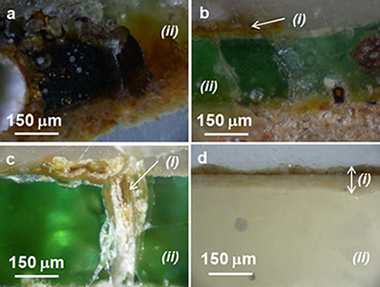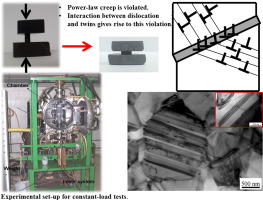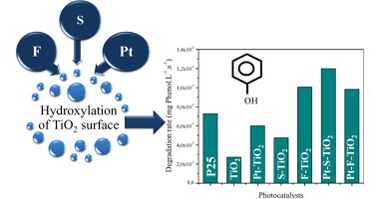Artículos SCI
2015
2015
Ceramics from the Alcazar Palace in Seville (Spain) dated between the 11th and 15th centuries: Compositions, technological features and degradation processes
Garofano, I; Robador, MD; Perez-Rodriguez, JL; Castaing, J; Pacheco, C; Duran, AJournal of the European Ceramic Society, 35 (2015) 4307-4319
Show abstract ▽

For the purpose of chemical characterization, a selection of 29 ceramic fragments from the 11th to 15th century has been made from materials excavated in the Seville Alcazar Palace. The PIXE elemental analysis results indicated that the ceramic bodies can be divided into four groups. The XRD identification of the phases present in the bodies revealed differences in the firing temperatures. The PIXE analysis of the glazes revealed variable PbO and SnO2 contents. The latter component was not detected in all the glazes. Cu, Co, Mn, Fe and Sb elements were associated with green, blue, black and yellow colours, respectively. Some glazes were covered by iridescent layers constituted by lead carbonate and phosphates due to alteration of the glazes. It was also possible to detail the microstructure and composition of the ultimate surface layers responsible for the lustre effect observed in two of the ceramic samples using PIXE and Rutherford backscattering spectrometry (RBS).
Diciembre, 2015 | DOI: 10.1016/j.jeurceramsoc.2015.07.033
Nanotecnología en Superficies y Plasma
Optical properties of zirconium oxynitride films: The effect of composition, electronic and crystalline structures
Carvalho, P; Borges, J; Rodrigues, MS; Barradas, NP; Alves, E; Espinos, JP; Gonzalez-Elipe, AR; Cunha, L; Marques, L; Vasilevskiy, MI; Vaz, FApplied Surface Science, 358 (2015) 660-669
Show abstract ▽

This work is devoted to the investigation of zirconium oxynitride (ZrOxNy) films with varied optical responses prompted by the variations in their compositional and structural properties. The films were prepared by dc reactive magnetron sputtering of Zr, using Ar and a reactive gas mixture of N-2 + O-2 ( 17:3). The colour of the films changed from metallic-like, very bright yellow-pale and golden yellow, for low gas flows to red-brownish for intermediate gas flows. Associated to this colour change there was a significant decrease of brightness. With further increase of the reactive gas flow, the colour of the samples changed from red-brownish to dark blue or even to interference colourations. The variations in composition disclosed the existence of four different zones, which were found to be closely related with the variations in the crystalline structure. XRD analysis revealed the change from a B1 NaCl face-centred cubic zirconium nitride-type phase for films prepared with low reactive gas flows, towards a poorly crystallized over-stoichiometric nitride phase, which may be similar to that of Zr3N4 with some probable oxygen inclusions within nitrogen positions, for films prepared with intermediate reactive gas flows. For high reactive gas flows, the films developed an oxynitride-type phase, similar to that of gamma-Zr2ON2 with some oxygen atoms occupying some of the nitrogen positions, evolving to a ZrO2 monoclinic type structure within the zone where films were prepared with relatively high reactive gas flows. The analysis carried out by reflected electron energy loss spectroscopy (REELS) revealed a continuous depopulation of the d-band and an opening of an energy gap between the valence band (2p) and the Fermi level close to 5 eV. The ZrN-based coatings (zone land II) presented intrinsic colourations, with a decrease in brightness and a colour change from bright yellow to golden yellow, red brownish and dark blue. Associated to these changes, there was also a shift of the reflectivity minimum to lower energies, with the increase of the non-metallic content. The samples lying in the two last zones (zone III, oxynitride and zone IV, oxide films) revealed a typical semi-transparent-optical behaviour showing interference-like colourations only due to the complete depopulation of the d band at the Fermi level. The samples lying in these zones presented also an increase of the optical bandgap from 2 to 3.6 eV.
Diciembre, 2015 | DOI: 10.1016/j.apsusc.2015.09.129
Propiedades mecánicas, modelización y caracterización de cerámicos avanzados
High-temperature deformation of fully-dense fine-grained boron carbide ceramics: Experimental facts and modeling
Moshtaghioun, BM; Garcia, DG; Rodriguez, ADMaterials & Design, 88 (2015) 287-293
Show abstract ▽

Boron carbide ceramics are the hardest material in Nature after diamond and the cubic phase of boron nitride. Due to this fact, their room-temperature fracture properties are the object of intense research. Paradoxically, high-temperature deformation is essentially unknown, because very high temperatures and stresses are necessarily required and high-quality specimens have not been available until recently. In this paper, the high-temperature compressive creep of fine-grained boron carbide polycrystals is reported. The breakdown of the classical power-law for high-temperature plasticity in ceramics is found. An analytical model is proposed. The model assumes that deformation is produced by dislocation glide. However, since the formation of twins is energetically favorable in this material and they act as strong barriers for dislocation glide, their motion turns to become progressively more difficult as elongation proceeds. The combination of increasing twin barriers and dislocations in mutual interaction is proposed to be the mechanism for high-temperature plasticity in this material. The model is validated with the experimental results. Final elongation of boron carbide specimens is reported to be over 100%, although this material cannot be described as a superplastic ceramic.
Diciembre, 2015 | DOI: 10.1016/j.matdes.2015.08.134
Fotocatálisis Heterogénea: Aplicaciones
Study of the phenol photocatalytic degradation over TiO2 modified by sulfation, fluorination, and platinum nanoparticles photodeposition
Murcia, JJ; Hidalgo, MC; Navio, JA; Arana, J; Dona-Rodriguez, JMApplied Catalysis B: Environmental, 179 (2015) 305-312
Show abstract ▽

In this work, titanium dioxide has been modified by sulfation, fluorination and simultaneous Pt nanoparticles deposition; the influence of these treatments on the photocatalytic activity of this oxide has been studied. A complete characterization study was carried out and it was observed that sulfation, fluorination and metallization were important factors influencing the TiO2 properties. The photocatalytic activity of the materials prepared was evaluated in the phenol degradation and it was found that TiO2fluorination significantly increased the phenol photodegradation rate, compared with bare TiO2, sulfated TiO2 or the commercial TiO2 Degussa P25. It was also found that Pt photodeposition on sulphated TiO2 notably increased the photocatalytic activity of this oxide, while Pt on fluorinated TiO2 did not modify significantly the phenol photodegradation rate.
Diciembre, 2015 | DOI: 10.1016/j.apcatb.2015.05.040
Materiales Ópticos Multifuncionales
Design and realization of transparent solar modules based on luminescent solar concentrators integrating nanostructured photonic crystals
Jimenez-Solano, A; Delgado-Sanchez, JM; Calvo, ME; Miranda-Munoz, JM; Lozano, G; Sancho, D; Sanchez-Cortezon, E; Miguez, HProgress in Photovoltaics, 23 (2015) 1785-1792
Show abstract ▽

Herein, we present a prototype of a photovoltaic module that combines a luminescent solar concentrator integrating one-dimensional photonic crystals and in-plane CuInGaSe2 (CIGS) solar cells. Highly uniform and wide-area nanostructured multilayers with photonic crystal properties were deposited by a cost-efficient and scalable liquid processing amenable to large-scale fabrication. Their role is to both maximize light absorption in the targeted spectral range, determined by the fluorophore employed, and minimize losses caused by emission at angles within the escape cone of the planar concentrator. From a structural perspective, the porous nature of the layers facilitates the integration with the thermoplastic polymers typically used to encapsulate and seal these modules. Judicious design of the module geometry, as well as of the optical properties of the dielectric mirrors employed, allows optimizing light guiding and hence photovoltaic performance while preserving a great deal of transparency. Optimized in-plane designs like the one herein proposed are of relevance for building integrated photovoltaics, as ease of fabrication, long-term stability and improved performance are simultaneously achieved.
Diciembre, 2015 | DOI: 10.1002/pip.2621
- ‹ anterior
- 236 of 420
- siguiente ›














